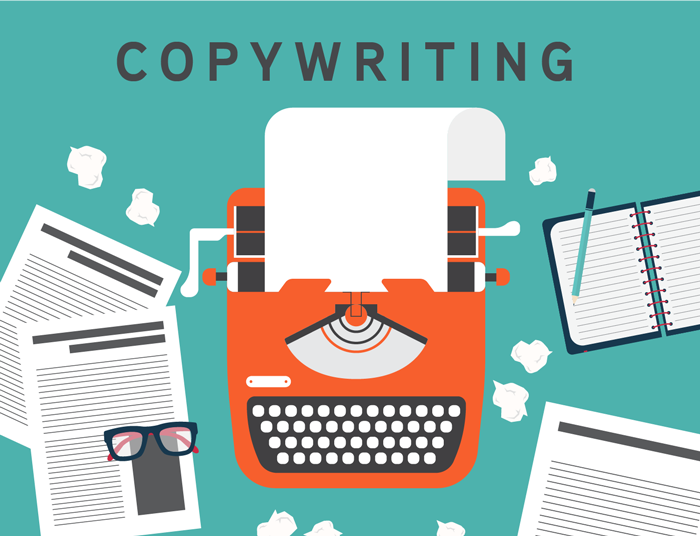
What Is Copywriting? AWAI's Essential Introduction to the Copywriting Industry
Are you considering a career in copywriting?
This guide is for anyone who wants to learn more about this exciting and lucrative industry.
Whether you’re exploring potential side gigs…
Or you’d like to make a full career transition…
Becoming a professional copywriter is an excellent opportunity to start making a good income doing something you love — writing!
And it’s no exaggeration to say the copywriting industry is HUGE.
According to Coherent Marketing Insights, the global copywriting services market size was $25.3 billion in 2023… and it’s expected to reach $42.2 billion by 2030.
Businesses around the world — both big and small — spend a lot of money on copywriting services each year.
And for good reason… effective copy and content are essential for finding new customers and making sales.
This is why skilled copywriters are in such high demand.
Not to mention, that high demand also makes it relatively easy for new copywriters to break into the industry and start landing their first few clients.
Now, why should you listen to us?
AWAI has been the leading publisher of copywriting training programs since 1997, with thousands of writers throughout the world crediting our programs for having changed their lives for the better.
We all feel very fortunate to be part of this amazing industry, and we’re excited to answer all your questions about this field and take you through everything involved in becoming a successful copywriter.
Welcome aboard!
What Is Copywriting?
Copywriting is the process of writing persuasive marketing and promotional materials that motivate people to take some form of action, such as make a purchase, click on a link, donate to a cause, or schedule a consultation.
These materials can include written promotions that are published in print or online. They can also include materials that are spoken, such as scripts used for videos or commercials.
The text in these materials is known as “copy,” hence the name “copywriting.”
The purpose of copywriting is to persuade, inform, and capture the attention of potential customers — whether they’re readers or viewers. It can also be used to build brand awareness, promote events or causes, educate customers about a product, and more.
However, copywriting should not be confused with the word “copyright.” Copyright refers to the exclusive legal right to reproduce or sell someone’s work, such as books, music, or artistic items. Copyright is designated with the symbol ©, and it’s meant to protect original works and prevent their illegal use.
Copywriting Examples
You may not realize it, but copywriting is everywhere.
In fact, if you just look in your mailbox, you’ll find some obvious examples of copywriting. Promotions for local restaurants, catalogs, fundraising letters from charitable organizations, or sales letters for various products and services are all forms of copywriting.




But the world of copywriting extends far beyond printed materials.
Much of what you read online is also copywriting — from blog posts, to product descriptions, to customer case studies and most other types of web pages.
Take the web page below from Stitch Fix, a website that specializes in helping people find a fashion style that’s appropriate for them. The site also sells clothing for a range of different styles.
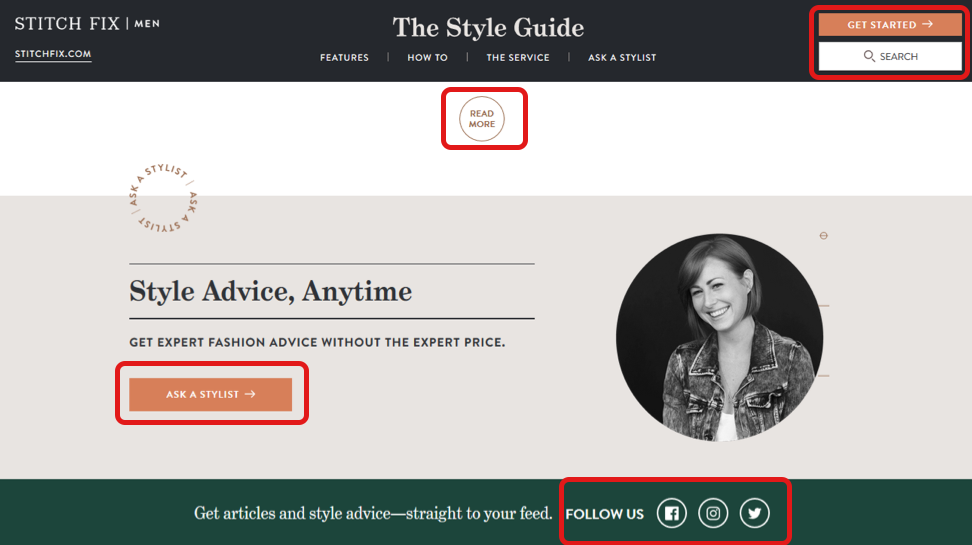
You can see the page has been written and designed to prompt you to take action in a variety of ways. You’re asked to “Read More,” “Get Started,” or “Follow Us” on social media. You can also “Ask a Stylist” for fashion advice.
These are simple prompts you see on websites on a daily basis, and they’re all forms of persuasive copywriting.
Many other online materials are also created by copywriters — such as downloads like free reports and guides, as well as emails and newsletters.
Your inbox is probably full of emails from a variety of businesses, like this one from Niche Pursuits:

Like any good copywriting, business emails need to be useful, engaging, and prompt the reader to take some kind of action. And Spencer has done that well in his short email above — all in less than 150 words.
Social media is another area where effective copywriting is essential for a company’s content to stand out.
Which of the following posts would you catch your attention the most if you saw it in your Instagram feed?


Lenka Lutonska’s post shares some intriguing details about how her business has been going in the first 22 days of the year. Her post is also set up as a slideshow, so readers can click through additional slides to read more.
Excuse My Reading’s post shares an inspiring quote, which is useful. However, it’s not as personable and engaging as Lenka telling us about her business. And it doesn’t have nearly as much persuasive written content.
Can you see the difference good copy makes for engaging your reader across a variety of marketing channels?
In addition, what you hear can also be copywriting in action.
Television commercials, product reviews on YouTube, and even short “how-to” videos on using a product are all examples of spoken copywriting.
Holly Hanna is an AWAI member and founder of the successful blog The Work at Home Woman, where Holly explores different ways to make money from home. She also posts regular YouTube videos, such as this one on work from home jobs for beginners:
Holly’s videos are full of helpful information on working from home, and she includes links to her site in the video descriptions and encourages viewers to check out more of her content, both written and video.
The examples here all show how effective copywriting informs and entertains both readers and viewers — while also encouraging them to take a desired action.
We’ll get into much more detail on the different types of copywriting in a moment, but this gives you an idea of the many ways that copywriting touches all our lives.
When Did Copywriting Start?
Copywriting as we know it today has been studied and recognized as an essential part of marketing for decades. In fact, the world’s first full-time copywriter, John Emory Powers, began his career in advertising around the year 1870!
But the history of copywriting goes back even further. No doubt, vendors on the streets of ancient Rome would have needed to use persuasion as they bartered with potential customers.
And can you guess when this ad for Van Camp’s Boston Baked Pork and Beans first ran?
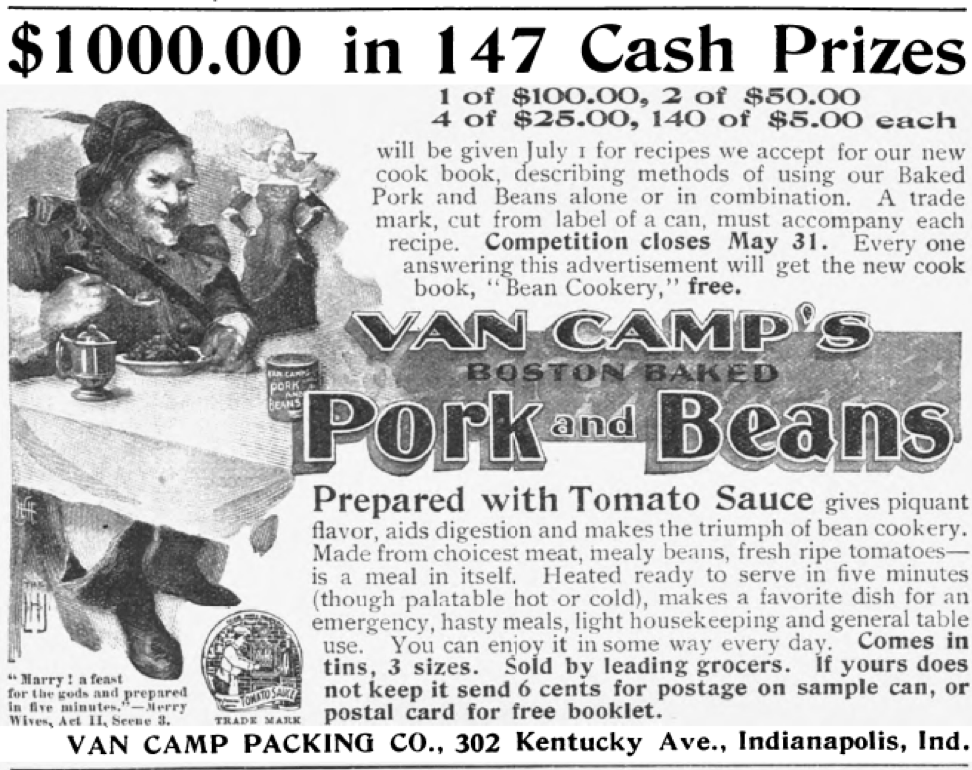
By modern standards, it’s a pretty good ad. It has eye-catching graphics, an enticing description of the product, and even a contest to engage readers.
It would be easy to assume this ad first ran in the 1960s, or even 1970s. It was actually first featured in The Ladies’ Home Journal in 1897.
The point is, copywriting has been around for a long time — and it’s not going anywhere.
Businesses have always needed to reach potential customers and effectively communicate what they can offer them.
This is even more important in our modern information age. Today, people are constantly receiving more and more competing messages throughout all forms of media.
And copywriters are the ones who can help a business create marketing materials that speak to their potential customers and stand out from their competition.
What Is a Copywriter?
A copywriter is a professional writer responsible for writing the text, or copy, used in marketing and promotional materials.
You may have heard various myths about writers, like the suggestion that writers are born with talent, and that you can’t “learn” how to write.
Or perhaps you’ve heard the opposite — that there’s no skill involved in writing and anyone can do it.
When it comes to copywriting, both of these myths are untrue.
Copywriters are professionals who have learned and practiced their craft. None of us were born knowing how to write excellent copy, but it’s definitely a skill that nearly anyone can learn with a bit of persistence.
But what does a copywriter do, exactly?
You might assume they just sit and write all day… but writing is actually only one part of a copywriter’s job.
Any individual writing project may also require additional research (both online or in-person), regular communication with your client or others in their company, finding images or graphics, managing your time and meeting project milestones, and then following up with any edits or revisions as needed.
Not to mention bookkeeping, invoicing, and other administrative tasks for yourself — particularly for freelance writers who are self-employed.
A copywriter’s individual tasks each day can be quite varied… and that doesn’t even factor in the different types of projects they can work on, as we mentioned earlier.
So, the actual job description of a copywriter can look different for almost everyone.
Also, some copywriters choose to work directly for companies, which gives them the stability of a regular job. Whereas, other copywriters choose to work as freelancers for the freedom and flexibility.
Either way, you can make a great income as a copywriter, and work as much or as little as you’d like.

And have we mentioned the benefits of living the writer’s life? Take it from the thousands of members at AWAI — there’s no life like it.
AWAI member Andrew Murray lives permanently in a 4x4 camper with his wife Peta, travelling the Australian Outback. He makes more than enough money as a freelance copywriter to maintain their nomadic lifestyle… and they wouldn’t have it any other way.
Amy Slagle, another AWAI member, enjoys a more stationary life in Griffin, Georgia. However, before she found copywriting, she worked as a school teacher. She liked the work, but it was a stressful job and the pay wasn’t great.
So when Amy heard about AWAI’s flagship program, The Accelerated Program for Seven-Figure Copywriting, she decided to take the leap. She quit her teaching job and focused on developing her copywriting skills. In less than a year, she was able to earn more as a copywriter than she had as a teacher, and leave behind the stress for good.
Like many other AWAI members, Amy now enjoys a flexible working schedule that allows her to spend more time with her family, pursue other hobbies, and live where she wants — all while making a great income doing what she loves.
The biggest ‘complaint’ we often hear from our members is, “Why didn’t I do this sooner?!”
Who Uses Copywriters?
Copywriting is at the core of nearly every business. This includes websites, nonprofit organizations, service providers, as well as brick-and-mortar retailers.
Without copywriters, businesses wouldn’t be able to share their messages with potential customers to expand their markets, or with current customers to keep them engaged.
Businesses of all sizes need and use copywriters.
In general, copywriting tends to cater to two main types of businesses — what are known as Business-to-Consumer (B2C) companies who sell directly to consumers, and Business-to-Business (B2B) companies who sell to other businesses.
Let’s take a closer look at each of these business types.
1. Business-to-Consumer (B2C) Companies
You’ve no doubt seen many B2C companies in day-to-day life. They’re some of the most recognized brands on the planet.
Think Coca-Cola, Ford, Nike, and McDonald’s — these are all examples of businesses that sell directly to consumers.
And they need a lot of written promotional materials to keep making sales.
Take Apple Inc. as an example. If you browse through their website, you’ll find descriptions of their products, like this one for the MacBook Air:
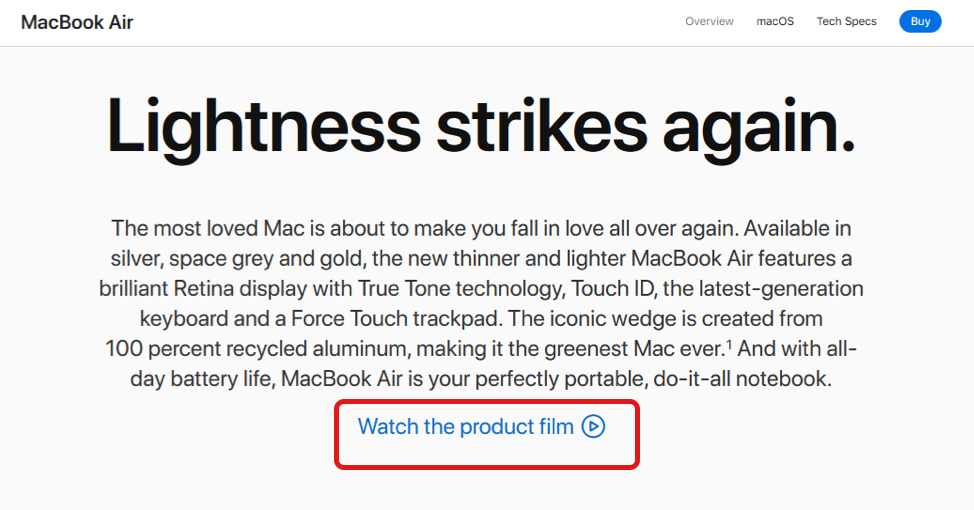
Product descriptions like these are written by copywriters, but you can also see there’s a link to a product video at the bottom of the page.
Guess who wrote the script for that video? You guessed it — a copywriter.
And if you scroll down the page, you’ll see this description for a special security chip included in the laptop:

The description is followed by a link to view a white paper about the chip. A white paper is a ‘research report’ — written by a copywriter — that goes into detail about a specific product or topic, offering in-depth, non-salesy information.
The fact that Apple has included videos, white papers, detailed product descriptions, and other materials like these shows they use copywriters quite heavily.
Like Apple Inc., other Fortune 500 companies also use copywriters extensively. They have substantial marketing budgets, and a portion of those budgets will go directly to copywriters.
That said, you don’t have to work for Fortune 500 companies if that’s not for you.
Many other types of B2C companies — both big and small — also use copywriters, such as:
- Financial institutions and investment firms
- E-commerce businesses
- Local service providers, such as veterinarians. car mechanics, and hair salons
- Fitness, personal improvement, and other types of coaches
- Dentists, medical doctors, and other healthcare providers
- Self-help authors and speakers
And this is only a small sampling of the types of B2C businesses that need your services as a professional copywriter.
Whatever you want to write about — from drones, to baking, to pet care — you’ll almost certainly find many B2C businesses that would be an excellent match for your writing skills and personal interests.
2. Business-to-Business (B2B) Companies
As the name suggests, these are businesses that sell their products and services directly to other businesses.
The B2B industry includes manufacturing, technology, pharmaceutical, agricultural, and many other companies that provide essential products and services for other businesses.
These companies often remain out of the public eye — which is why many writers don’t consider B2B businesses as potential clients.
However, B2B companies need copywritten materials as much as B2C companies do. In fact, they often need even more marketing materials than their B2C counterparts.
This is because the buyer’s journey for selling B2B products is often much longer than for B2C products.
For instance, if a B2C company is selling something like natural body care products directly to consumers, they’ll need to create an engaging and informative website. They may also send out regular emails to existing and potential customers, as well as other ongoing advertisements and promotions.
But if their products are good quality and fairly priced, many consumers would be willing to give them a try.
Now, let’s compare this to a B2B company like Thermwood, which makes what are known as computer numerical controlled (CNC) machines. CNC machines are used in manufacturing to precisely cut individual components in products like automotive parts, electronic devices, or medical instruments.
And a single, industrial CNC machine can cost well over $100,000.

Needless to say, CNC machines are complex pieces of equipment that are targeted at very specific customers. And B2B companies like Thermwood need to put a lot more effort into selling complex products like CNC machines than comparatively smaller B2C products.
You can see on Thermwood’s homepage above that they have an extensive navigation menu on their site. They have full product descriptions for every CNC machine, with supporting videos, brochures, and a form to request more information.
They also have an active forum, a blog, FAQs, a free e-book on CNC machines, information for international customers, and details on training courses they offer.
Now, this may seem like a lot… but B2B customers need that much information to make an informed buying decision. For large purchases like this, customers will be comparing many different companies before making their final choice.
And B2B businesses need to create all these materials — which is a BIG opportunity for trained copywriters.
In addition, because of their “behind-the-scenes” nature, B2B companies often struggle to find copywriters who are familiar with creating the marketing materials they need. This shortage of skilled writers also keeps B2B project fees consistently high.
If you’re interested in learning more about B2B writing, check out our free resource B2B Copywriting: A Comprehensive Guide to Writing for the B2B Industry.
What’s the Difference Between Copywriting and Content Writing?
You may read or hear some sources that suggest copywriting and content writing are different things.
There’s a grain of truth to this, but we’ll explain where this distinction starts to break down.
As a general rule of thumb, copywriting refers to writing marketing and promotional materials. Content writing, on the other hand, refers to writing informational or editorial pages on websites, such as blog posts, article pages, or product pages.
This is an accurate description of what each term means.
But some definitions suggest that content writing is purely informational and has no element of persuasion — which means it is not copywriting.
At AWAI, we disagree with this distinction.
Essentially all web pages will include some form of persuasion or call-to-action.
This is particularly evident on a product page with a clear “Buy Now!” button at the bottom.
But even an article page uses subtle calls-to-action, usually in the form of links to additional resources, or suggestions for other pages you can visit on the site.
These are all elements of persuasion.
So, it’s inaccurate to suggest that content writing is distinct from copywriting.
We feel that content writing is simply another type of copywriting.
And like any good copywriting, content writing aims to engage the reader and make them take some form of action — even if it’s just staying on a website to read another page.

Is Copywriting a Good Career?
As we mentioned in the introduction to this guide, the global copywriting services market size was $25.3 billion in 2023, and this is expected to go up to $42.2 billion by 2030.
That’s a 67% increase in market size over the next seven-year period.
In this time of economic instability, not many industries are experiencing that level of growth.
In fact, the U.S. Bureau of Labor Statistics estimates that out of the 832 occupations they track, 195 of those occupations are predicted to decline over the next 10 years. That means job losses will be seen in nearly 25%, or one quarter, of all professions throughout the U.S.!
On the other hand, Coherent Marketing Insights says that the copywriting industry is set to keep expanding for many reasons, such as:
- Increasing demand for online content,
- Growing popularity of social media, and
- Rising need for effective marketing strategies that engage audiences and drive business growth.
Businesses are investing heavily in marketing and copywriting to help them stand out from their competition and stay profitable.
The following statistics show how copywriting, both in print and online, is an integral part of most modern businesses:
- 59% of marketers expect to increase the use of direct mail in the next five years.
- In the digital realm, 90% of all organizations use online content marketing.
- And more than 80% of those marketers plan to spend more on content marketing.
- 62% of companies outsource their content marketing. In other words, they hire external copywriters.
Robert Half International recently reported, “Demand for skilled copywriters is rising as more companies require compelling content for Web-based initiatives and print advertising. 60% of advertising and marketing executives who plan to hire new employees said they’ll be adding copywriters.”
“Without good copywriters, we don’t have a business.” — Julia Guth,
The Oxford Club
The future looks bright for copywriting — and those of us lucky enough to be part of the industry.
Copywriting is a sought-after skill that businesses need to survive. This is why copywriting is a growing industry that pays well and has a nearly bottomless amount of work.
And one of the best parts of a career in copywriting is the fact you don’t need a string of letters behind your name to get started!
You can be up and running quickly and with very little investment.
We explain the exact steps you’ll need to take in the how to become a copywriter chapter of this guide.
As long as you put in the effort to learn the craft of copywriting, you’ll always be in demand and able to enjoy the high income and stability that come with being a copywriter.
How Is Artificial Intelligence Affecting the Copywriting Industry?
Artificial intelligence (AI) has definitely changed the landscape of copywriting…
But most writers would argue that it’s changed it for the better.
The numerous AI-based tools available today help copywriters ideate, research, plan, outline, and draft a variety of written projects. By automating certain steps of the writing process, AI has allowed writers to streamline their workflow and complete projects faster.
This means they can take on more projects and potentially earn more by harnessing the power of AI.
What this does NOT mean is that AI will somehow replace all copywriters and make the human touch obsolete.
In fact, the exact opposite is happening.
With the new writing capacities that AI opens up, marketers are finding that they’re able to publish more content, and create more advertising campaigns and other marketing assets.
In HubSpot’s The State of Marketing Report for 2024, they surveyed over 1,400 global marketing professionals, and of those marketers…
- 84% reported that AI improved content quality.
- 84% said AI tools enhanced efficiency. Overall, AI helped them save 3 hours per piece of content and 2.5 hours per day.
- 82% are producing “significantly more content.”
- 77% felt that AI helped them craft more personalized content.
This shows that AI can help marketers produce more content that’s higher quality in less time.
But does that mean they can skip human copywriters altogether?
Far from it…
Only a human can connect with readers on an emotional level that AI simply cannot… and only humans can tell an emotionally compelling story. People buy based on emotion, and then justify their decision with logic, so copy that elicits emotion and gets the reader feeling something is very critical to businesses.
HubSpot’s survey also found that 40% of companies had hired dedicated AI experts to support their marketing team.
With increased efficiency and productivity, businesses actually need more copywriters to handle the workload — particularly copywriters who are familiar with using AI.
So it’s clear that AI is not replacing copywriters anytime soon.
And on a final note, we’d like to point out that AI will always be machine-based. It’s excellent at analyzing and compiling data and studying and copying patterns. That’s how it’s able to mimic human writing.
But it will only ever be able to mimic — it will never be able to actually create something new or to truly sound human.
That’s why human copywriters will always be needed to operate and guide AI writing tools. We have the inborn creativity and originality that a machine will never have.
And that’s why our unique skills, insights, and knowledge will continue to be in high demand for years to come.
About What Is Copywriting? AWAI’s Essential Introduction to the Copywriting Industry
We wrote this guide for anyone who’s considering becoming a professional copywriter.
It will cover everything you need to know to decide whether or not copywriting is the right career choice for you.
Remember, you don’t need to be a great writer or have any background in marketing to succeed as a copywriter.
But you do need the motivation and determination to learn the basics of copywriting and how to market yourself as a copywriter.
That’s where this guide comes in.
How to Become a Successful, Well-Paid Copywriter In 2025… What You Need, What You Don’t… and the Enormous Opportunity That Awaits You!
Enroll in our FREE 5-part “Be a Copywriter” video training series to learn how to get started as an in-demand “Thrive-from-Anywhere” Copywriter
— Enter Your Info for IMMEDIATE Access —
PLUS receive our FREE daily newsletter, The Writer’s Life, packed with powerful insights, strategies, and expert advice on how to make a great living through writing.
By providing your email today, you’re giving consent for us to contact you by email. We do not sell your personal information to other companies, and you can withdraw consent at any time. By submitting this form, you agree to our Privacy Policy.
What You’ll Learn
This guide has multiple sections. Each one will take you through a specific aspect of the copywriting industry, as well as the different types of work and income you can expect as a copywriter.
The sections are organized in a logical progression to build on each other, but you can read them in whatever order you like.
If you have any questions while you’re going through this guide, don’t hesitate to contact us. We’ll be happy to provide any further information and help you explore your options as a potential copywriter.
And if you decide to take the leap to become a professional copywriter, let us know right away.
We would love to get to know you!
The AWAI Method™ for Becoming a Skilled, In-Demand Copywriter
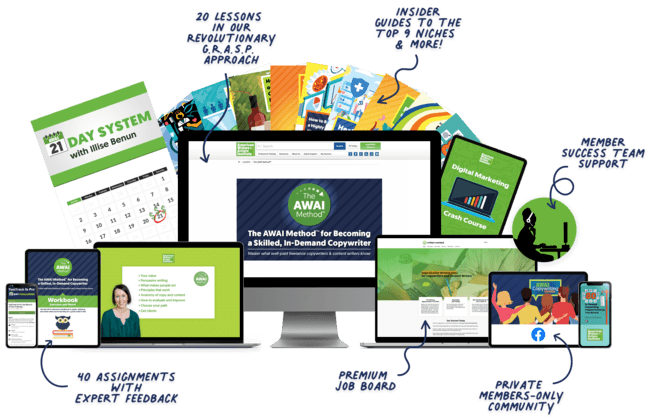
Everything you need to start getting paid to write:
- Hands-on training…
- Assignments with feedback…
- A portfolio of five professional samples…
- Help landing well-paying clients…
- And more!
The Basics of Copywriting

All forms of copywriting share certain basic principles you’ll need to know as a copywriter.
This section will take you through these copywriting fundamentals and give you an idea of what sets copywriting apart from other forms of writing.
The basics of copywriting are fairly straightforward and easy to learn, but taking the time to master them is an essential step to becoming a professional copywriter.
Types of Copywriting

Copywriting is used by nearly all businesses throughout the world, and it comes in many different forms.
This section takes a closer look at the main types of copywriting, the types of businesses that use them, as well as some core industries that hire a lot of copywriters.
The various types of copywriting include a range of print and online materials, so you’ll get a good idea of what projects you might want to specialize in as a copywriter.
What’s the Job Description of a Copywriter?

This section answers the common question: what exactly does a copywriter do?
You’ll get to know the day-to-day life of a copywriter, which, in our opinion, is pretty awesome. You’ll also find out what kinds of jobs are available for copywriters, where they can work, and other professional roles they can play.
How Much Do Copywriters Make?
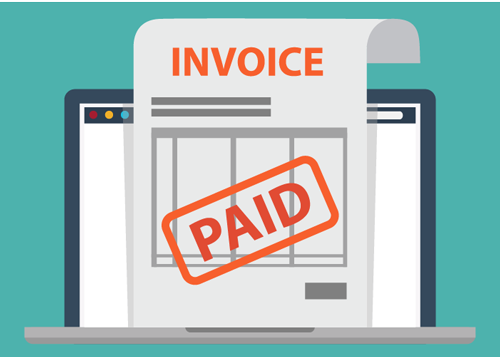
Your income as a copywriter can vary, depending on how you approach your copywriting career.
This section will detail common copywriter salaries, as well as how to set and maximize your fees as a freelancer.
It will also cover the areas of copywriting that tend to pay the most.
How to Become a Copywriter: 7 Steps for Starting a Copywriting Career in 2025

Becoming a full-fledged copywriter can seem like a daunting task.
But it doesn’t have to be.
In this section, you’ll discover a host of practical tips for shortening your learning curve and getting up and running as a professional copywriter as quickly as possible.
5 Ways to Find Copywriting Jobs

You’ve done all the background work to set yourself up as a copywriter. Now what?
This section gives you an inside look at how to find the highest paying and most rewarding copywriting jobs in the industry. A vast number of opportunities are waiting for you, as long as you know where, and how, to look.